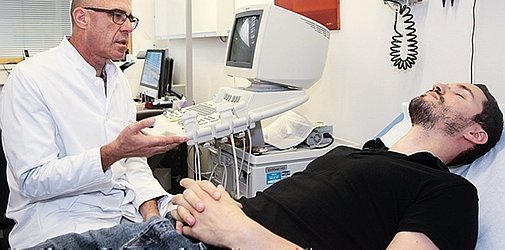.
As an independent method of treatment, hypnosis is used only at the initial stage of alcohol dependence. In severe cases, preliminary drug therapy is necessary. Suggestion is used in many medical practices. It helps eliminate obsessive states, understand oneself and find out the cause of pathological mental disorders. For alcoholism, hypnosis began to be used in the 19th century. The effect causes a persistent aversion to strong drinks.
Advantages of the technique
Hypnosis therapy for alcohol addiction has a number of advantages:
- completely safe for the body;
- improves mental state;
- helps get rid of phobic disorders and other causes of pathological conditions;
- has a longer validity period;
- sometimes it gets rid of addiction forever.
In specialized medical institutions, the procedure is carried out by a psychologist or psychiatrist with sufficient experience and skills. Hypnosis of alcoholism at home is impossible. The essence of the technique is to immerse a person in an unconscious state. The purpose of the method is to identify the causes and blocks that do not allow one to get rid of the obsessive state. They are eliminated on a subconscious level with the help of attitudes.
After hypnosis encoding, patients feel disgust or indifference to alcohol.
What is hypnosis
This is an effective method of treating mental disorders associated with alcohol dependence. The main goal of hypnotherapy is to overcome cravings for alcoholic beverages. The essence of the technique: using clearly formulated phrases, adjust the alcoholic to a new type of thinking, change the approach to life.
After emerging from trance and hypnotic sleep, a persistent aversion to alcohol arises.
Does hypnosis treatment help with alcohol addiction?
The effectiveness of the method is confirmed by reviews of former alcoholics.
The main advantage of hypnotherapy is the treatment of toxic addiction without drugs, the absence of attacks of aggression against the background of drug treatment.
The patient does not need hospitalization; sessions are carried out on an outpatient basis. For hypnosis to work against alcoholism, the following conditions are required:
- a stable, voluntary desire to quit drinking;
- preliminary cleansing of the body from ethanol breakdown products;
- trust in the narcologist (belief in a speedy recovery);
- completing a full course of hypnotherapy (a number of sessions may be required).

Dovzhenko method
In 1985, WHO approved treatment methods according to the Dovzhenko scheme. Advantages of the technique:
- efficiency is 92%;
- absence of hints of inferiority in attitudes;
- being in suggestive consciousness during hypnosis;
- increasing the efficiency of nerve centers, improving well-being;
- no vomiting at the sight of alcohol.
The hypnotist in the process of work stimulates the excitation center of neurons. This center sets a block on desires of any kind associated with drinking alcohol. The duration of action of the block is purely individual: the effect may disappear after a year or last a lifetime. The validity period depends on the client’s personal motives, desires and goals.
Close collaboration with the hypnologist is necessary. The patient must follow all instructions.

Without the patient's desire to correct the situation, it is impossible to correct the situation; the intervention will be ineffective. The standard Dovzhenko procedure includes 3 stages.
- Acquaintance, determination of the patient’s goals, introduction of the first corrective settings in the behavioral line, recommendations.
- Penetration into the client’s subconscious in order to expose the primary instincts that awaken aversion to alcoholic beverages as killing the body and leading to degradation.
- Hypnotic coding using influence on the central nervous system. A person immersed in a state of hypnotic sleep hears only the voice of the hypnologist; consciousness perceives his verbal instructions as an incentive to active action.
The individual perceives the hypnotist’s words as his own thoughts. The center of the brain, which is responsible for the instincts of self-preservation, activates all the protective functions of the body necessary to adapt to new conditions. A persistent aversion to the taste and smell of alcohol develops.
Hypnosuggestive psychotherapy
This technique is one of the oldest. Evidence has been found of the use of hypnosuggestive therapy in Ancient Egypt.
It is used on patients who voluntarily agreed to hypnosis and only individually. The essence of the method is similar to Dovzhenko coding, however, the duration is different. To consolidate the attitudes formed by suggestive therapy, up to 15 sessions will be required. Although effectiveness is achieved already at the first meetings, it does not last long.

Before hypnosis, it is recommended to abstain from alcohol for at least a week.
The patient is also immersed in a trance state after a mandatory preliminary conversation. A confident voice instills negativity towards alcohol, forming prohibitions, phobias and warnings against drinking alcohol.
After being brought out of trance, many patients experience a cheerful mood, a surge of energy, and activity.
Contraindications to the use of the method are previous unsuccessful attempts at coding by hypnosis, consciousness altered under the influence of alcohol.
Suggestive suggestion is safe and has no side effects.
Anchor treatment method
The technology of the anchor method belongs to Pavlov. Its essence is to develop a stable reflex of aversion to alcohol and one’s own behavior at the moment of intoxication. An anchor is a mark in consciousness that appears as a result of certain events occurring in a person’s life. It could be a smell, a sound effect, a picture or a touch. People experience a range of emotions when they see blood, fruit, the sun, smell perfume, hear music or feel the wind blow. For example, in childhood, a mother brings gifts to her child from work. A subtle aroma of perfume emanates from her. At a conscious age, having smelled such an aroma, a person will suddenly feel a surge of joy.
The anchor is selected purely individually, depending on the characteristics of the client’s perception of information.
The most effective is the use of several types of anchors at once: words, pictures, touch, smell.

The work takes place over several weeks. The anchor must work flawlessly and help the client control himself. The patient must want to be in control of his life. For example, the patient is given a verbal anchor. The word should be short, sonorous, unusual. After pronouncing it, the patient is immersed in a trance, and after the trance it no longer matters who pronounces the word.
Treatment process
The patient sits comfortably on a chair and is helped to relax. They ask you to imagine a distant place associated with positive memories. Then they are transported to the worst memory and to the moment when the person is intoxicated. During the process, the hypnotist asks questions about the feelings, experiences, and desires that accompany this or that period of life. This is a preparatory stage that allows you to determine the cause of pathological abnormalities.
Later, the behavioral line is modeled using an anchor. Each time, the patient is transported to the moment when he was intoxicated, and they say: “As soon as I say the word (they voice it), you will feel nauseous and wake up.” Next, sessions are held in which the patient is transported to the moment before alcohol intoxication. The hypnotist uses an anchor to instruct you to give up alcohol.
Over time, the work of the anchor begins to be tested in practice. The disadvantage of this method is that the patient will control his own future activities. For example, if he is offered a drink, he will have to find the strength to mentally pronounce the anchor setting.
If the client does not have the willpower or desire to get rid of the addiction, then the therapy will not be effective.
Signs of alcoholism
Before you begin treatment for alcohol addiction with hypnosis or other methods, you should study the symptoms and signs that are characteristic of it. These include:
- lack of desire to work;
- unsystematic drinking periods;
- drinking alcohol in large quantities without withdrawal;
- the occurrence of a hangover;
- external manifestations (skin aging, darkening of the skin, enlarged veins and bruising, etc.).
The lack of financial stability in the life of an alcoholic is a consequence of addiction; he no longer wants to work, believing that he is unable to change anything in his destiny; everyone around him is to blame for his troubles.
Periodically there comes a period of drinking. It can last more than a day. In beginning alcoholics, alcohol consumption increases without external rejection, i.e., there is no vomiting or feeling of extremes. After a binge, a persistent hangover occurs (withdrawal syndrome), which is relieved by the alcoholic with another dose of alcohol.
Addiction takes its toll on a person's appearance. He has a swollen, dark-colored face and skin, swollen and pronounced veins, cloudy eyeballs, and a wandering gaze.
We invite you to familiarize yourself with Alcohol Blindness
Those who have fallen completely lose their sense of self-esteem; a person slides to the level of animal instincts. He does not come out of his state and constantly maintains a certain dose of alcohol in his body.
Speech is incoherent and incomprehensible to others. Gradually, internal organs are damaged and death occurs. If you turn to a specialist in time, hypnosis will relieve alcoholism and become a salvation for the patient and his environment.
Neurolinguistics
The human subconscious stores a large amount of information. In a healthy person, all centers of the brain work harmoniously and harmoniously. The nervous system, sending impulses to other organs and systems, activates protective functions, and the body quickly adapts to the situation. With alcohol addiction, the body is adapted to work with toxins inside. Alcohol destroys the neurotransmitter connection. Neurotransmitters provide signal transmission to the areas of the central nervous system responsible for pleasure.

As a result, alcohol toxins replace neurotransmitters. Brain centers work to self-destruct the body. A person is not able to understand that he is killing himself.
Neurolinguistic programming allows you to pull out from the depths of the subconscious attitudes that allow you to receive euphoria from other activities. The procedure takes several months. The effectiveness of the method is questionable. Success is guaranteed only when the patient himself desires to get rid of addiction and actively cooperates with a psychologist. The essence of the method is to find the cause and eliminate it. Then behavior is moderated in relation to certain life situations.
Procedure
When carrying out the above procedure, for greater effect, the psychotherapist can accompany his words by inflicting physical pain. He needs to ensure that strong negative feelings discourage any desire to drink alcohol. And the doctor achieves his goal. The patient can indeed go several months, and in some cases several years, without touching alcoholic beverages. As soon as he thinks about alcohol, nausea immediately creeps up his throat, and a thought appears in his head: if he drinks, he will die. And if he still decides to drink, then all the sensations increase many times over.
Ericksonian technique
This method is called soft hypnosis. Suggestion is not aggressive or suppressive. The individual receives attitudes, but at the same time can choose whether to agree with them or not. The method is more effective due to working with several layers of the subconscious, which allows both participants in the procedure to understand the essence of the problem.
The purpose of the technique is to help the patient understand the problem and its essence. While in a trance, the patient gets the opportunity to analyze thoughts, feelings, actions and see ways to solve the problem.

The technique allows patients to find other ways to obtain pleasure.
After hypnosis, mental changes occur that radically change the behavioral line and outlook on life.
Contraindications and disadvantages of therapy
Any type of treatment has its contraindications. Hypnosis is not performed in several cases:
- the patient’s lack of desire to be treated, to accept the problem;
- psychopathy provoked by alcoholism;
- brain injury;
- withdrawal symptoms, hallucinations;
- the last stages of alcoholism, accompanied by complete degradation.
Hypnosis will not work on a deteriorating patient. In such cases, it is impossible to establish a strong connection with the individual. Suggestion will not work if the person is on replacement therapy (taking medications to eliminate withdrawal symptoms). The biorhythms of the brain are disrupted under the influence of psychotropics, antidepressants, and sedatives.

One of the disadvantages is the fact that not every person is able to submit to hypnosis.
Strong-willed people are completely immune to any kind of such influences. The therapy will not work without the client’s desire, since the introduction to hypnotic sleep involves complete relaxation and concentration on certain objects.
Features of alcohol addiction
A person does not become an alcoholic suddenly; the disease develops in stages.
Initially, attachment occurs at the psycho-emotional level, gradually control over the desire to drink is lost, and a physical need to drink alcohol is formed.
There are three stages of development:
- The first stage, lasting from 1 year to 5 years. A person drinks more often than before and looks for a reason to drink alcoholic beverages. Better ethanol tolerance occurs, but the sense of proportion has already been lost. The desire to hangover appears occasionally. Main symptoms: swagger, aggressiveness, contradictions in actions and words.
- Second stage, up to 15 years. It is typical for most people who go to drug treatment centers or hospital departments. Resistance to alcohol appears, the patient drinks a lot and often. There is no need for a reason to drink; an alcoholic can drink simply because he wants to. There is a desire to get hungover, frequent binges occur for 7-10 days. Withdrawal syndrome appears (trembling legs and arms, nausea, painful condition, insomnia, no desire to eat).
- Third stage. This period is characterized by a complete loss of control over one’s desires, a decrease in intellectual abilities, and a lack of criticism of one’s actions. An alcoholic drinks little, but constantly, and gets drunk quickly. By this stage, alcohol has already had a negative impact on all organs, including the appearance of the abuser. Personal degradation sets in.
The last two stages are characterized by a mixture of physical and mental dependence on alcohol; ethanol begins to participate in metabolic processes. Abruptly stopping drinking alcohol can lead to dangerous consequences; withdrawal symptoms will become more pronounced.
In such situations, to relieve negative manifestations, suggestive methods are used to painlessly remove the patient from a state of constant intoxication and improve overall well-being.
Female alcoholism is curable. Feedback from a patient after completing a course of hypnotherapy.
It is possible that you will have to take the course again, since the effect of hypnosis sessions is often temporary - its duration can vary from several months to several years. In addition, the person needs to either change his environment, or let friends and family understand that he does not approve of the very idea of trying to persuade him to “drink at least a little for company.”
A priority factor for successful rehabilitation is to increase a person’s motivation to enjoy life in natural ways. It's not just alcohol that can give you a feeling of euphoria. This could be creativity or sports, which fill the spiritual vacuum created after giving up alcohol. If there is an incentive for development, a person multiplies his chances of complete rehabilitation.
Our thoughts determine our actions. The hypnotherapy technique was built on this postulate, which has helped hundreds of thousands of people get rid of chemical addictions.
Treatment of alcoholism with hypnosis is a technique that helps to form a persistent aversion to alcohol from the first session.
When used in combination with other treatment methods, the effectiveness of help for alcoholism can reach phenomenally high figures of 90%.
The drug treatment clinic "Doctors" offers its patients to take advantage of systematic programs for overcoming addiction, which include various methods of treatment with hypnosis.
You can find out which suggestive technique is right for you specifically, and whether it is right for you at all, at your first free appointment with a narcologist.

Call to make an appointment and ask questions: Are you interested in the price for this route? The results of our treatment are complete abstinence from alcohol in 90% of cases! 8 499 322 45 82.
Various methods are used to put the patient into a trance. The patient may look at a shiny object, listen to monotonous speech or music. There are methods of tactile introduction to hypnosis and others.
At the first stage of hypnosis, a person experiences relaxation - muscular and psychological. The second stage resembles a state of superficial sleep - it is this stage that is usually used in narcology to treat alcoholism with hypnosis. In the third stage, a person plunges into a deeper sleep - somnambulism.
We suggest you read: How to get rid of alcohol addiction for a woman
In a state of hypnosis, a person’s consciousness is changed: it does not turn off completely, but all the patient’s attention and thoughts are focused on the figure of the hypnotist and what he is talking about. Everything else fades for a while and loses significance.
Advice!
At this moment, the doctor instills in the patient new attitudes regarding alcohol - the hypnotist’s thoughts are perceived as his own.
After emerging from a trance state, a person experiences disgust at the mere thought of alcohol, and the addiction to alcohol is replaced by a fear of drinking.
The advantage of hypnotherapy is its rapid effect: after just a single exposure, it is possible to achieve remission in many patients suffering from alcoholism. 10-15 sessions of hypnosis help you maintain a sober lifestyle for years.
Possible consequences after hypnotherapy are that all attitudes regarding alcohol are suggested, and over time they begin to weaken.
As soon as this period passes, no longer suppressed personal attitudes towards alcohol again push the person to abuse alcohol.
There are various hypnotic techniques that can be used to create aversion to alcohol in an addicted person:
- Psychosuggestive technique (within its framework, the well-known coding according to Dovzhenko is carried out);
- Anchor coding;
- Ericksonian hypnosis;
- Hypnodrama.
Anchor method

The anchor method is not hypnosis in the full sense of the word. The “anchor” method is based on creating a conditioned reflex connection between a specific action and a specific external stimulus.
An example of how the anchor method works is the associative connection of the smell of a Christmas tree and tangerines with the New Year. Even if the holiday is still far away, recognizable smells will create an upbeat “New Year’s” mood.
Attention!
The same effect is used in the treatment of patients with alcoholism. During the session, the specialist helps the patient remember something pleasant associated with a sober lifestyle. Next, the specialist creates a conditioned reflex connection between pleasant memories and some kind of “anchor” - an object, sound, touch, etc.
The next time a person feels the urge to drink alcohol, he can use an anchor (for example, feeling for a certain object in his pocket) to cause an emotional uplift at the thought of life without alcohol. The desire to drink will fade away.
Autotraining
Autotraining is a technique based on independently instilling in oneself certain thoughts and attitudes regarding alcohol. The addict himself can tell himself every day that he experiences joy while being sober, that he will achieve his goal and will maintain sobriety throughout his life, etc. You can create your own statements on the problem of alcoholism.
By repeating the same path day after day, we eventually trample the road. By reinforcing the same mindset day after day, we help ourselves switch to a new way of thinking. With the help of auto-training, you can completely change your entire belief system regarding alcohol and gain complete control over your addictive state.
The widely known Dovzhenko coding is considered a highly effective method of treating alcoholism by suggestion.
During the procedure, the doctor gives a lecture to the patient about the dangers of alcohol, thereby preparing for the hypnosis session.
Subsequently, the addict is put into a hypnotic trance, and in this state receives directives from the doctor regarding alcohol: “alcohol destroys me,” “alcohol causes unique harm to my health,” etc.
At the Doctors clinic, alcoholism is treated with hypnosis using all the techniques described above. If your goal is to get rid of addiction and our goal is to get rid of addiction, they coincide, call and come to us! The first appointment with a narcologist at our medical center is free. Contact phone number where you can find out how much the service costs.
It is better not to carry out treatment at home and go to a special clinic.
Reviews and videos on hypnotherapy can be found on the Internet - there is a lot of information in this area.

– Is it possible to code yourself in such a way that you can have a drink or two on the most important holidays and stop there?
– It is possible, but provided that the person has not yet become a chronic alcoholic. This measure is effective for those who are addicted only on a psychological level.
– Igor Ivanovich, the main method you use is hypnosis. Recently, the opinion has begun to spread that hypnotic influence on a person often causes negative side effects. Have similar “misfires” happened in your practice?
– Russian and foreign scientists conducted long-term observations of people subjected to hypnotic influence. It has been proven that the mental state of most of them is normal. The only exceptions were patients of unqualified, untrained doctors and people who suffered from mental illness before exposure. Therefore, we can state with confidence: hypnosis, carried out according to all the rules, is safe for health.
– What treatment methods, besides hypnosis, do you offer patients?
– By primary education, I am a neurologist. I am proficient in manual therapy, acupuncture... As a rule, when working with a patient, I use a complex technique. My employees work with me - qualified psychiatrists, psychologists, sex therapists, herbalists, experienced specialists with academic degrees.
Contraindications
Coding using hypnosis is not always possible. There are contraindications for which it is necessary to consider other, most often medicinal, treatment methods.
Such restrictions include:
- Mental disorders and diseases.
- Traumatic brain injuries, spinal fractures, brain damage.
- Epilepsy and seizures.
- ZPR.
- Taking tranquilizers, sedatives and antidepressants.
- Breastfeeding and pregnancy.
- Withdrawal syndrome and binge drinking.
- Infections and exacerbation of diseases, including fever, poisoning, overexcitement, loss of strength.
- Complications and pathologies of cardiac activity.
- Cancer diseases.
- Surgical interventions.
It is also not recommended to perform hypnosis if the patient has given consent under pressure from relatives or medical professionals.










